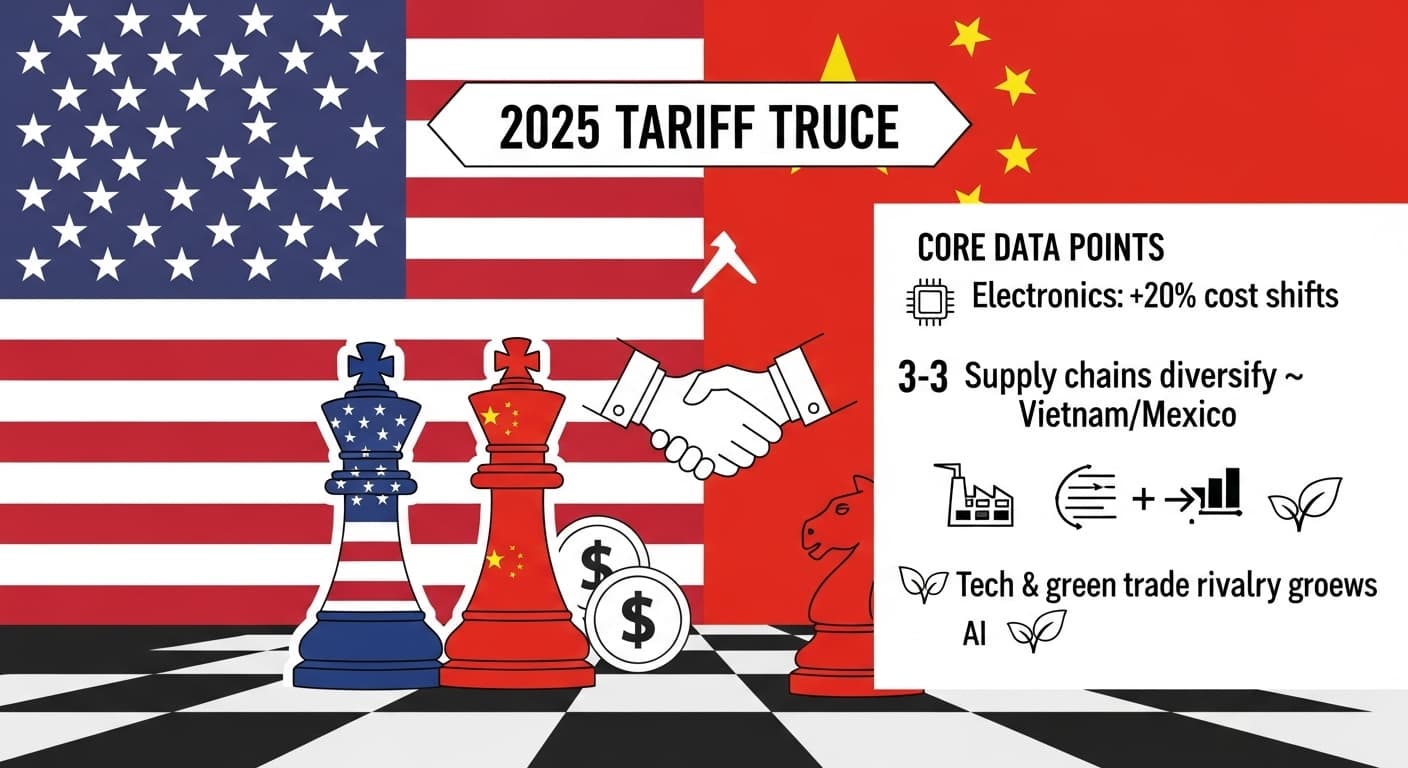
Executive Summary
The proposed $85 billion merger between Union Pacific and Norfolk Southern represents a watershed moment in American freight transportation, creating the first transcontinental railroad network in U.S. history. This comprehensive analysis examines the strategic implications, operational benefits, regulatory challenges, and broader industry impacts of this transformative transaction for logistics professionals and supply chain stakeholders.
Understanding the Union Pacific-Norfolk Southern Merger: A New Era in American Freight Transportation
(联合太平洋-诺福克南方铁路合并:美国货运铁路的新时代)
The announcement of Union Pacific’s proposed acquisition of Norfolk Southern for $85 billion marks one of the most significant developments in American transportation infrastructure since the completion of the transcontinental railroad in 1869. This merger promises to fundamentally reshape how goods move across the United States, creating new opportunities and challenges for businesses, logistics professionals, and the broader economy.
1 · The Strategic Vision: Creating America’s First Modern Transcontinental Railroad
Historical Context and Market Evolution
The American freight rail industry has undergone dramatic consolidation over the past several decades, evolving from a fragmented network of regional carriers to today’s highly efficient Class I railroad system. This proposed merger represents the logical next step in that evolution, addressing fundamental inefficiencies that have persisted in the current network structure.
Current Network Limitations: The existing rail network, while highly developed, suffers from a critical structural limitation: the lack of seamless coast-to-coast service under single ownership. Today’s shippers moving freight from the East Coast to the West Coast typically face:
- Interchange Delays: Mandatory stops in Chicago and other hubs for cargo transfer between railroads
- Service Coordination Challenges: Complex coordination between multiple carriers with different operating procedures
- Pricing Complexity: Multiple billing relationships and pricing structures
- Performance Variability: Inconsistent service standards across different network segments
The Transcontinental Solution: The proposed Union Pacific Transcontinental Railroad would eliminate these structural barriers by creating a unified network spanning more than 50,000 route-miles across 43 states. This integration would connect nearly 100 ports under single management, fundamentally changing the economics and efficiency of long-haul freight movement.
Strategic Benefits and Operational Synergies
Network Integration Advantages: The merger creates immediate operational benefits through network integration:
Elimination of Chicago Bottlenecks: Chicago has long served as the critical interchange point for transcontinental freight movement, creating inevitable delays and inefficiencies. The merged network would enable direct routing around these bottlenecks, potentially reducing transit times by several days for coast-to-coast shipments.
Single-Line Service Expansion: The ability to offer single-line service for major commodity flows represents a significant competitive advantage. Industries that would particularly benefit include:
- Steel Industry: Seamless movement of steel products from Pittsburgh and other Eastern production centers to Western markets
- Lumber Industry: Direct routing of Pacific Northwest lumber to Eastern construction markets
- Agriculture: Improved grain movement from Midwest production areas to Pacific export terminals
- Intermodal: Enhanced container movement between East and West Coast ports
Technology Integration and Optimization: A unified network enables comprehensive technology integration that can optimize routing, scheduling, and resource utilization across the entire system. This includes:
- Predictive Analytics: System-wide optimization using advanced analytics and machine learning
- Real-Time Tracking: Seamless tracking and visibility across the entire network
- Automated Planning: Integrated planning systems optimizing the entire transcontinental route
- Customer Interface: Unified customer service and billing systems
2 · Economic Impact Analysis: Quantifying the Benefits
Cost Savings and Efficiency Gains
Projected Annual Synergies: The companies project $2.75 billion in annual synergies, representing substantial value creation through operational improvements and cost elimination:
Operational Efficiency Improvements:
- Reduced Interchange Costs: Elimination of costly interchange operations and associated delays
- Network Optimization: Route optimization reducing total system miles and improving asset utilization
- Crew Efficiency: Improved crew utilization through longer runs and reduced deadheading
- Maintenance Optimization: Consolidated maintenance operations and standardized procedures
Revenue Enhancement Opportunities:
- Premium Service Offerings: Ability to offer differentiated premium services for time-sensitive freight
- Market Share Growth: Competitive advantages enabling market share gains in key corridors
- New Service Development: Development of new services previously not economically viable
- Customer Retention: Enhanced customer loyalty through superior service offerings
Financial Structure and Valuation
Transaction Details: The $320 per share acquisition price represents a 25% premium over Norfolk Southern’s recent trading levels, reflecting both the strategic value of the combination and the competitive dynamics of the rail industry.
Combined Entity Metrics: The merged company would create a transportation powerhouse with impressive financial metrics:
- Annual Revenue: Approximately $36 billion based on 2024 performance
- EBITDA: Projected $18 billion with strong cash flow generation
- Operating Ratio: Target of 62%, representing industry-leading efficiency
- Free Cash Flow: Estimated $7 billion annually, providing substantial financial flexibility
Value Creation Timeline: The companies expect adjusted earnings per share accretion in the second year post-merger, with sustained high single-digit growth thereafter. This timeline reflects the complexity of rail network integration while demonstrating confidence in the strategic benefits.
3 · Industry Transformation and Competitive Dynamics
Reshaping the Competitive Landscape
Class I Railroad Consolidation: This merger would reduce the number of major North American freight railroads from six to potentially four, as competitors may pursue their own consolidation strategies in response. The remaining major players would include:
- BNSF Railway: Berkshire Hathaway’s railroad with strong Western coverage
- CSX Transportation: Major Eastern railroad serving the Southeast and Northeast
- Canadian National and Canadian Pacific: Canadian railroads with significant U.S. operations
Competitive Response Strategies: Industry observers anticipate potential counter-moves from competitors, including:
- Strategic Alliances: Enhanced cooperation agreements between remaining carriers
- Service Improvements: Accelerated investment in service improvements and technology
- Niche Market Focus: Increased focus on specialized markets and service offerings
- Alternative Transportation: Potential for increased competition from trucking and intermodal services
Supply Chain Implications
Shipper Considerations: For companies that rely heavily on rail transportation, this merger creates both opportunities and concerns:
Opportunities:
- Service Improvements: Potential for faster, more reliable transcontinental service
- Simplified Relationships: Single-carrier relationships for coast-to-coast movements
- Innovation Access: Access to enhanced technology and service innovations
- Network Flexibility: Greater routing options and service flexibility
Concerns:
- Reduced Competition: Fewer options for rail service in certain corridors
- Pricing Power: Potential for increased pricing power in less competitive markets
- Service Dependencies: Greater dependence on a single carrier for critical transportation needs
- Transition Risks: Potential service disruptions during network integration
Strategic Response for Shippers: Companies should consider several strategic responses to position themselves effectively:
- Relationship Management: Proactive engagement with the merged entity to ensure service priorities
- Alternative Development: Development of alternative transportation options for critical lanes
- Contract Negotiation: Strategic contract negotiations to lock in favorable terms and service levels
- Supply Chain Redesign: Evaluation of supply chain design opportunities created by improved rail service
4 · Regulatory Framework and Approval Process
Surface Transportation Board Review
Regulatory Authority: The Surface Transportation Board (STB) has jurisdiction over railroad mergers and will conduct a comprehensive review of this transaction. The STB’s analysis will focus on several key areas:
Competition Analysis:
- Market Concentration: Assessment of competitive impacts in various geographic and commodity markets
- Shipper Protection: Evaluation of measures to protect shippers from potential anti-competitive effects
- Alternative Transportation: Consideration of alternative transportation options and competitive constraints
- Public Interest: Broader assessment of public interest benefits and concerns
Historical Context: The STB and its predecessor agencies have a mixed history with large railroad mergers. The challenging integration of Union Pacific’s 1996 acquisition of Southern Pacific serves as a cautionary tale, leading to more rigorous regulatory scrutiny and requirements for subsequent mergers.
Stakeholder Perspectives
Labor Union Concerns: Railroad labor unions, including the SMART Transportation Division, have expressed concerns about potential impacts on:
- Employment Levels: Potential for workforce reductions through operational consolidation
- Safety Standards: Concerns about maintaining safety standards during integration
- Work Rules: Changes to established work rules and operating procedures
- Job Security: Long-term job security in a more consolidated industry
Shipper Advocacy: Major shipping organizations are likely to advocate for:
- Service Commitments: Binding commitments to maintain or improve service levels
- Pricing Protections: Safeguards against anti-competitive pricing in captive markets
- Transition Support: Support during the integration process to minimize disruptions
- Performance Monitoring: Ongoing monitoring of performance commitments
Regulatory Conditions and Commitments
Likely Approval Conditions: Based on historical precedent, the STB may require various conditions for approval:
Service Commitments:
- Performance Standards: Binding commitments to specific service performance metrics
- Capacity Investments: Requirements for infrastructure investments to support increased traffic
- Interchange Agreements: Maintenance of competitive interchange arrangements with other carriers
- Emergency Procedures: Contingency plans for service disruptions during integration
Competitive Protections:
- Trackage Rights: Granting of trackage rights to competing carriers in certain markets
- Divestiture Requirements: Potential divestiture of redundant or competitively sensitive lines
- Open Access: Enhanced access requirements for shortline and regional railroads
- Rate Regulation: Enhanced oversight of rates in markets with limited competition
5 · Operational Integration Challenges and Opportunities
Network Integration Complexity
Technical Integration Requirements: Merging two major railroad networks involves extraordinary complexity across multiple dimensions:
Physical Infrastructure:
- Track Standards: Harmonization of track standards, signaling systems, and operating procedures
- Yard Operations: Integration of classification yards and terminal operations
- Maintenance Facilities: Consolidation and optimization of maintenance facilities and equipment
- Technology Systems: Integration of dispatching, scheduling, and customer service systems
Operational Coordination:
- Crew Training: Comprehensive training for crews on new routes and procedures
- Safety Integration: Harmonization of safety procedures and protocols
- Service Planning: Development of integrated service plans and schedules
- Customer Transition: Smooth transition of customer relationships and service commitments
Learning from Historical Precedents
Lessons from Previous Mergers: The railroad industry’s experience with large mergers provides valuable lessons for successful integration:
Critical Success Factors:
- Gradual Integration: Phased integration approach minimizing service disruptions
- Customer Communication: Proactive communication with customers throughout the process
- Employee Engagement: Comprehensive employee engagement and change management
- Technology Investment: Adequate investment in technology integration and system compatibility
Risk Mitigation Strategies:
- Contingency Planning: Comprehensive contingency plans for potential integration challenges
- Performance Monitoring: Real-time monitoring of service performance during integration
- Rapid Response: Capabilities for rapid response to emerging issues and customer concerns
- Stakeholder Coordination: Ongoing coordination with regulators, customers, and other stakeholders
6 · Broader Economic and Strategic Implications
National Economic Impact
Infrastructure Investment Benefits: The merger creates opportunities for substantial infrastructure investment that could benefit the broader economy:
Transportation Efficiency:
- Reduced Congestion: Improved rail efficiency reducing highway congestion and maintenance costs
- Environmental Benefits: Modal shift from trucking to rail reducing emissions and environmental impact
- Economic Competitiveness: Enhanced transportation efficiency supporting U.S. economic competitiveness
- Supply Chain Resilience: More resilient transcontinental transportation network
Regional Development:
- Port Connectivity: Enhanced connectivity between East and West Coast ports
- Manufacturing Support: Improved transportation supporting manufacturing and distribution
- Agricultural Access: Better access to markets for agricultural producers
- Energy Transportation: Enhanced capability for energy product transportation
International Trade Implications
Global Competitiveness: The merger could enhance U.S. competitiveness in global trade through:
Port-to-Port Efficiency:
- Container Movement: Faster, more efficient movement of containers between major ports
- Export Capabilities: Enhanced ability to move export goods to international gateways
- Import Distribution: Improved distribution of imported goods across the continent
- Supply Chain Integration: Better integration with global supply chains
Trade Route Optimization:
- Asia-Pacific Trade: Improved handling of growing Asia-Pacific trade flows
- Mexican Integration: Enhanced integration with Mexican trade and USMCA benefits
- Canadian Coordination: Better coordination with Canadian transportation networks
- Atlantic Trade: Improved access to Atlantic trade routes and European markets
7 · Technology Innovation and Future Opportunities
Digital Transformation Potential
Advanced Technology Integration: The merged network would create opportunities for implementing cutting-edge transportation technologies:
Artificial Intelligence and Analytics:
- Predictive Maintenance: AI-powered predictive maintenance reducing downtime and costs
- Dynamic Routing: Real-time route optimization based on current conditions and demands
- Demand Forecasting: Advanced analytics for capacity planning and resource allocation
- Customer Service: AI-enhanced customer service and problem resolution
Automation and Efficiency:
- Automated Operations: Increased automation in yards, terminals, and line operations
- Precision Scheduled Railroading: Implementation of advanced PSR principles across the network
- Energy Optimization: Optimization of fuel consumption and environmental performance
- Safety Enhancement: Technology-enhanced safety systems and procedures
Sustainability and Environmental Benefits
Environmental Performance: Rail transportation offers significant environmental advantages that the merger could amplify:
Carbon Footprint Reduction:
- Modal Shift Benefits: Encouraging modal shift from trucking to more efficient rail transport
- Fuel Efficiency: Improved fuel efficiency through network optimization and technology
- Emission Reductions: Substantial reductions in greenhouse gas emissions per ton-mile
- Sustainable Logistics: Support for corporate sustainability and environmental goals
Green Technology Implementation:
- Alternative Fuels: Development and deployment of alternative fuel technologies
- Energy Recovery: Implementation of energy recovery and regenerative braking systems
- Efficiency Improvements: Continuous improvements in energy efficiency and environmental performance
- Sustainable Practices: Industry leadership in sustainable transportation practices
8 · Strategic Considerations for Logistics Professionals
Preparing for Industry Transformation
Strategic Planning Implications: Logistics professionals should consider several factors when planning for this industry transformation:
Service Strategy Assessment:
- Transportation Mix: Evaluation of optimal transportation mix considering new rail capabilities
- Route Optimization: Assessment of routing strategies to take advantage of improved rail service
- Cost-Benefit Analysis: Comprehensive analysis of costs and benefits of enhanced rail service
- Risk Management: Evaluation of risks and mitigation strategies for increased rail dependence
Relationship Management:
- Carrier Relationships: Strategic approach to managing relationships with the merged entity
- Alternative Options: Maintenance of alternative transportation options and relationships
- Contract Strategy: Strategic approach to contract negotiations and service agreements
- Performance Monitoring: Systems for monitoring and managing transportation performance
Implementation Considerations
Operational Readiness: Companies should prepare operationally for the potential changes:
Infrastructure Adaptation:
- Facility Planning: Evaluation of facility locations and capabilities relative to new rail network
- Technology Integration: Systems integration to take advantage of enhanced rail technology
- Process Optimization: Process improvements to maximize benefits of improved rail service
- Training and Development: Staff training on new opportunities and service options
Financial Planning:
- Cost Structure Impact: Analysis of potential changes to transportation cost structures
- Investment Opportunities: Evaluation of investments that could enhance rail transportation benefits
- Risk Assessment: Financial risk assessment related to transportation strategy changes
- Performance Metrics: Development of metrics for measuring transportation performance and value
9 · Looking Ahead: The Future of American Freight Transportation
Industry Evolution Trajectory
Long-Term Industry Trends: This merger reflects and accelerates several long-term trends in freight transportation:
Consolidation and Efficiency:
- Network Optimization: Continued focus on network optimization and efficiency improvements
- Technology Integration: Accelerated adoption of advanced technologies across the industry
- Service Innovation: Development of new service offerings and capabilities
- Sustainable Transportation: Increased emphasis on environmental sustainability and efficiency
Market Development:
- Intermodal Growth: Continued growth in intermodal transportation and container handling
- E-commerce Impact: Adaptation to changing freight patterns driven by e-commerce growth
- Supply Chain Evolution: Support for evolving supply chain strategies and requirements
- Global Integration: Enhanced integration with global transportation and logistics networks
Strategic Success Factors
Key Elements for Success: Several factors will determine the ultimate success of this merger:
Execution Excellence:
- Integration Management: Successful management of the complex integration process
- Service Continuity: Maintenance of service levels during the transition period
- Customer Focus: Continued focus on customer needs and service excellence
- Employee Engagement: Successful engagement and integration of employees from both companies
Market Adaptation:
- Competitive Response: Effective response to competitive challenges and market changes
- Innovation Leadership: Continued leadership in technology and service innovation
- Regulatory Compliance: Successful compliance with regulatory requirements and conditions
- Stakeholder Management: Effective management of relationships with all stakeholders
10 · Conclusion: Navigating the New Transportation Landscape
Strategic Implications Summary
The proposed Union Pacific-Norfolk Southern merger represents a transformative moment for American freight transportation, creating opportunities and challenges that will reshape the industry for decades to come. For logistics professionals and supply chain managers, this development requires careful analysis and strategic thinking to maximize benefits while managing potential risks.
Key Takeaways:
Operational Benefits: The merger promises significant operational improvements through network integration, technology advancement, and service enhancement. Companies that effectively leverage these improvements could achieve substantial competitive advantages through improved efficiency, reliability, and cost-effectiveness.
Market Dynamics: The changing competitive landscape will require strategic adaptation from all market participants. Understanding these dynamics and positioning appropriately will be crucial for long-term success in the evolving transportation market.
Regulatory Considerations: The regulatory review process will shape the final structure and conditions of the merger. Staying informed about regulatory developments and their implications will be important for strategic planning and risk management.
Strategic Recommendations
For Logistics Professionals:
Assessment and Planning:
- Conduct comprehensive assessment of potential impacts on your transportation and supply chain strategies
- Develop scenario plans for different regulatory outcomes and integration timelines
- Engage proactively with transportation providers to understand service implications
Relationship Management:
- Maintain strong relationships with multiple transportation providers
- Participate actively in industry discussions and advocacy efforts
- Monitor regulatory proceedings and their implications for your operations
Operational Excellence:
- Continue investing in transportation management capabilities and technology
- Optimize current transportation strategies while preparing for future changes
- Focus on building flexible, resilient supply chain operations
Final Thoughts
The Union Pacific-Norfolk Southern merger represents both the culmination of decades of industry evolution and the beginning of a new chapter in American freight transportation. While the ultimate outcome remains subject to regulatory approval and successful integration, the strategic vision of a truly transcontinental railroad network offers compelling benefits for the American economy and global competitiveness.
For industry participants, the key to success lies in understanding these changes, preparing strategically, and maintaining focus on operational excellence while adapting to new opportunities and challenges. The companies and logistics professionals who approach this transformation thoughtfully and strategically will be best positioned to benefit from the enhanced capabilities and efficiencies that a transcontinental railroad network could provide.
As this historic transaction moves through the regulatory process and toward potential implementation, the freight transportation industry stands at the threshold of a new era that could fundamentally improve how goods move across America and enhance the nation’s competitive position in global trade.
This analysis provides comprehensive information about the Union Pacific-Norfolk Southern merger and its implications for the freight transportation industry. Organizations seeking to understand the strategic implications for their specific operations or develop transportation strategies for the evolving rail landscape may benefit from professional consultation with experienced transportation and logistics specialists who can provide guidance tailored to specific operational requirements and market conditions.



